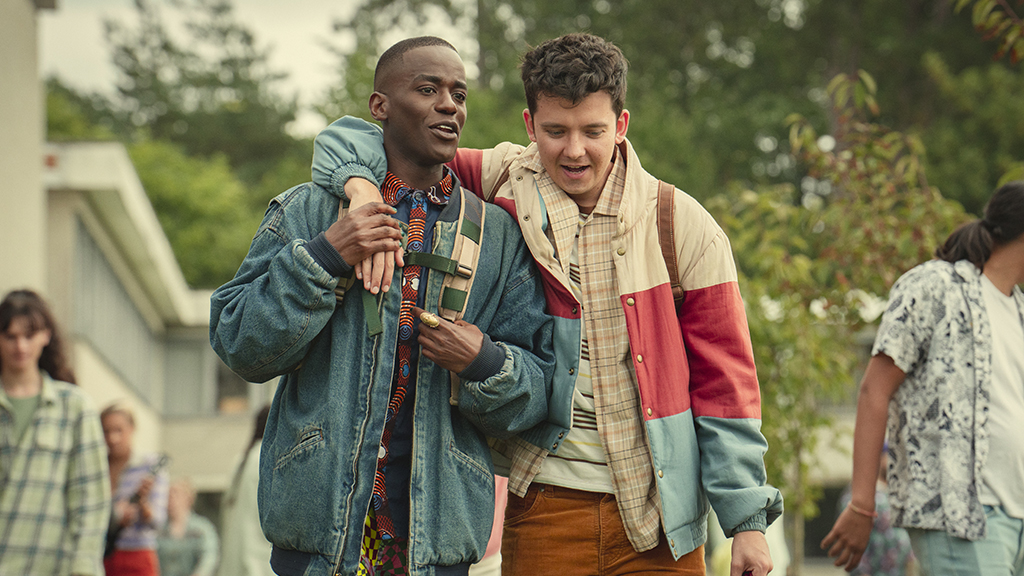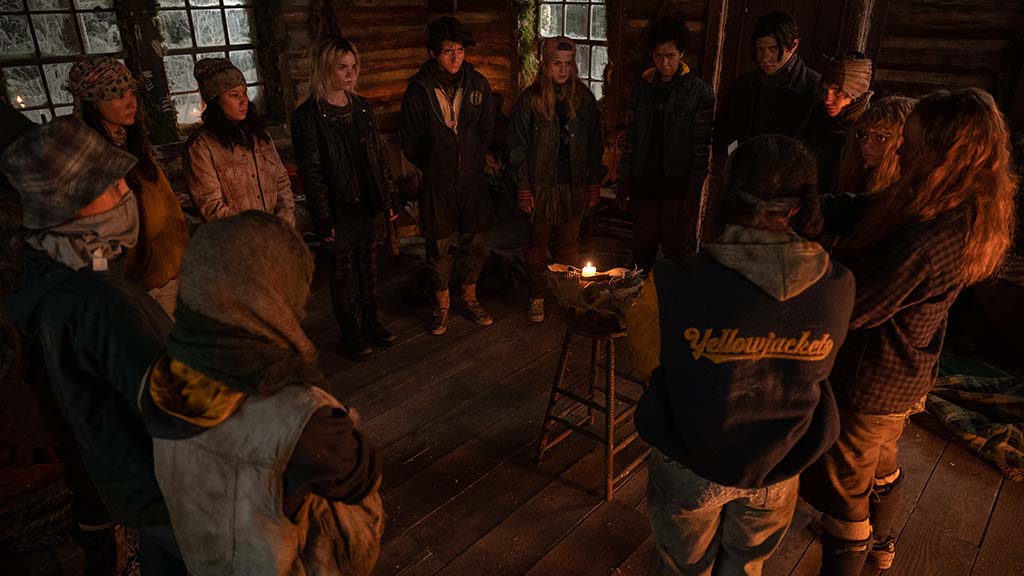
In the shadow of last May’s celebration of LGBTQ+ content at the GLAAD Media Awards in New York, and on the eve of Pride Month, two new reports on the production and distribution of LGBTQ-themed programming point to worrisome signs that the rollout of such diverse programming may be peaking.
As the industry continues to recover from actors and writers strikes and amid a business-driven constriction in original show production, content featuring LGBTQ+ characters and storylines is decreasing. That’s led industry observers to fear that the flow of content from and about the community may be a victim of an industry seachange.
After several years of posting significant increases among series regulars and recurring characters on broadcast, cable and streaming, the presence of LGBTQ characters on TV has declined precipitously over the past two seasons, according to GLAAD’s annual Where We Are on TV report.
During the 2023-24 television season, the number of LGBTQ characters on broadcast series dropped to 39 characters, a loss of 31 from the 70 characters charted during the 2022-23 TV season and well down from the record 92 characters on broadcast shows in 2021-22, according to the report.
Affects Cable, Streaming Too
Cable and streaming series also reported declines during the 2023-24 season, with LGBTQ characters on cable down by 62 from the 139 characters noted in the 2022-23 report, and a down by 29 characters on streaming services from the 356 reported in 2022-23.
Much of the decline can be attributed to the cancellation or conclusion of 36 series featuring LGBTQ characters across broadcast, cable and streaming services over the past year, including A League of Their Own on Prime Video, Grease: The Rise of The Pink Ladies on Paramount Plus, Starz’s Hightown and Netflix’s Sex Education.
An even more concerning trend is the decline of LGBTQ+ characters within specific demographics, GLAAD officials said. In terms of gender, 53% of the LGBTQ characters on canceled shows are women, compared to just 47% of all LGBTQ characters counted overall. Also, 11 of 24 nonbinary characters and 10 of 24 trans characters were on series that were canceled or ended, according to the 2023-24 survey.

Acknowledging that last summer’s Writers Guild of America and Screen Actors Guild strikes are partly to blame for the declining number of LBGTQ+ shows and characters, GLAAD senior director of entertainment research and analysis Megan Townsend says that the industry still needs to make a more concerted effort to replenish lost LGBTQ+ programming.
“It’s clear that networks and streamers looking to maintain relevance and brand longevity with the growing LGBTQ audience should be developing their future slates with an eye towards stabilization,” she said. “This includes multiple season orders, prompt renewals and a sustained investment in inclusive storytelling through meaningful marketing, promotion and production budgets given to new and returning titles.”
GLAAD president and CEO Sarah Kate Ellis told B+C Multichannel News prior to the May 11 GLAAD Media Awards ceremony — which recognized excellence in the media for offering fair, accurate and inclusive representations of LGBTQ people and issues — that the portrayal of the LGBTQ community on-screen also goes a long way in counteracting what she says has been a steady flow of misinformation from media figures and politicians. The NYC GLAAD Media Awards event highlighted such original shows as HBO’s The Last of Us (Outstanding New Series) and Netflix’s Rustin (Outstanding Film, Streaming or TV).
“It helps to increase the visibility of the LGBTQ community and helps to educate people about who they are as their visibility has grown through TV and on various media platforms,” Ellis said.
The declines come as a recent study from Horowitz Research points to the value and appeal of LGBTQ content among younger viewers who are just beginning to make their choices as to how and where they will watch their programming.
Nearly one in three 18-to-34-year-olds surveyed said they are more likely to watch a show with LGBTQIA+ characters and stories, according to Horowitz’s April State of Media, Entertainment and Tech: Focus LGBTQIA+ report. That share jumps to two-thirds when factoring in just LGBTQIA+ viewers.

The Horowitz survey added that more than half of LGBTQIA+ streamers and 38% of young streamers are active in searching for programming collections and hubs that they consider valuable to their viewing experience of LGBTQIA+ content.
Horowitz Research executive VP and insights and strategy lead Adriana Waterston said that the increase in original LGBTQ+ content over the past couple of years is now being threatened by a tightening of original programming budgets, leading to less content getting produced.
Indeed, FX recently reported that the overall number of original scripted shows produced dropped from an all-time high of 600 in 2022 to 516 in 2023.
“The diversity awakening in 2020 ushered in a lot of shows that had gay and trans characters in shows that went beyond niche content like [FX’s] Pose and into mainstream programming, like [Fox’s] 9-1-1: Lone Star, which features gay and trans characters,” she said. “My concern is that the constriction of content in general will have a negative effect on diverse programming and characters on TV. We’re starting to see some of that already. It’s as if we’re taking three steps forward only to take two steps back.”
GLAAD: Successful Shows Prove the Case
Ellis, in her summary of the 2023-24 GLAAD Where We Are on TV Study, said that shows like The Last of Us and Showtime’s Yellowjackets have proven that content with LGBTQ characters resonates with viewers and can offer distributors successful, long-running programming that will continue to attract viewers.
“We know that younger audiences are hungry for shows that truly reflect the world around them,” she said. “The answer behind impactful and long-lasting television is right there for studio executives, showrunners and Hollywood at-large, and the stakes could not be higher.”
Added Waterson: “We already know that differentiated, really high-quality, compelling stories can be universally appealing, even if they don’t necessarily have people that look like you or talk like you. The safer choice [for distributors] would be to paint with a wide brushstroke, but companies may have to ruffle some feathers along the way if they want to resonate with the next generation of viewers.”







